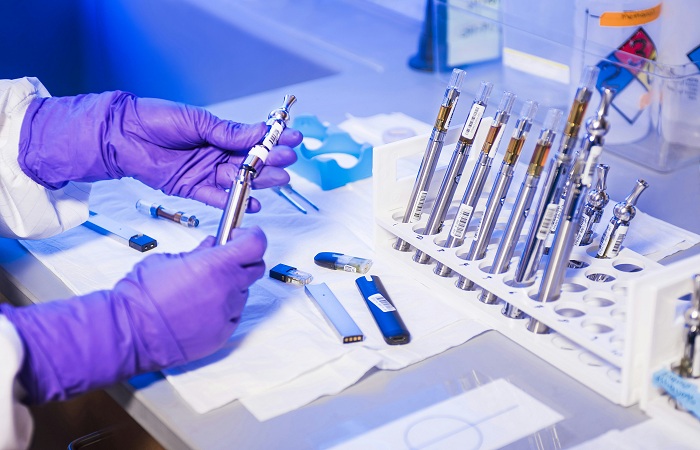Introduction to Virus-like Nanoparticles (VLNPs)
Virus-like nanoparticles (VLNPs) are nanoscale structures that mimic the properties of viruses but lack the viral genetic material, making them non-infectious and highly versatile for various applications. These nanoparticles have gained significant attention in the fields of nanotechnology, medicine, and biotechnology due to their unique ability to mimic the structural and functional characteristics of viruses. This article delves into the production of VLNPs, highlighting their significance, methods of synthesis, and potential applications.
Significance of VLNPs
The primary advantage of VLNPs lies in their ability to present multiple antigens on their surface, similar to real viruses. This attribute makes them ideal candidates for vaccine development, as they can elicit strong immune responses without the risk of causing disease. Additionally, VLNPs can be engineered to display specific ligands or antibodies, making them useful tools for targeted drug delivery, diagnostics, and imaging.
Methods of VLNP Production
Producing VLNPs involves several sophisticated techniques that ensure the particles maintain their structural integrity and functionality. The following are some common methods used in VLNP production:
- Recombinant Expression Systems
One of the most widely used methods for producing VLNPs involves recombinant expression systems. These systems utilize genetically engineered bacteria, yeast, insect, or mammalian cells to produce viral proteins that self-assemble into VLNPs. For example, the baculovirus expression vector system (BEVS) in insect cells is a popular choice for producing high yields of VLNPs.
- Chemical Synthesis
Chemical synthesis methods involve the use of chemical reactions to create nanoparticles with virus-like properties. This approach allows for precise control over the size, shape, and surface characteristics of the VLNPs. Techniques such as emulsion polymerization, nanoprecipitation, and self-assembly are commonly employed in chemical synthesis.
- Physical Methods
Physical methods such as sonication, high-pressure homogenization, and electrospray are also used to produce VLNPs. These techniques rely on physical forces to break down larger particles into nanoscale structures or to assemble smaller components into VLNPs. While these methods can be effective, they often require additional steps to ensure uniformity and stability of the nanoparticles.
Characterization of VLNPs
Characterization of VLNPs is crucial to ensure their quality and functionality. Several analytical techniques are employed to assess the size, shape, surface charge, and composition of VLNPs.
Some of the common characterization methods include:
- Transmission Electron Microscopy(TEM): TEM provides high-resolution images of VLNPs, allowing researchers to observe their morphology and size distribution.
- Dynamic Light Scattering(DLS): DLS measures the size distribution and polydispersity index of VLNPs in solution, providing insights into their stability and uniformity.
- Zeta Potential Analysis: This technique assesses the surface charge of VLNPs, which is essential for understanding their colloidal stability and interaction with biological systems.
- Mass Spectrometry: Mass spectrometry helps in determining the molecular composition and structural integrity of the VLNPs.
Applications of VLNPs
The versatility of VLNPs has led to their exploration in various fields. Some key applications include:
- Vaccine Development
VLNPs are extensively used in vaccine development due to their ability to mimic viral antigens and elicit robust immune responses. They have been employed in the development of vaccines against infectious diseases such as influenza, human papillomavirus (HPV), and hepatitis B.
- Targeted Drug Delivery
The surface of VLNPs can be functionalized with specific ligands or antibodies to target diseased cells or tissues selectively. This targeted drug delivery approach enhances the therapeutic efficacy while minimizing off-target effects and toxicity.
- Diagnostics and Imaging
VLNPs can be engineered to carry imaging agents or diagnostic markers, enabling their use in medical imaging and diagnostic applications. For example, VLNPs conjugated with fluorescent dyes or radioisotopes can be used for tracking and imaging specific cells or tissues in vivo.
- Gene Therapy
VLNPs can serve as carriers for delivering genetic material into cells for gene therapy applications. By encapsulating therapeutic genes within VLNPs, researchers can achieve efficient and targeted gene delivery, potentially treating genetic disorders and other diseases.
Challenges and Future Prospects
Despite the promising potential of VLNPs, several challenges remain in their production and application. Scalability, reproducibility, and cost-effectiveness are significant hurdles that need to be addressed for large-scale production. Additionally, ensuring the safety and biocompatibility of VLNPs is crucial for their successful translation into clinical applications.
Ongoing research and advancements in nanotechnology are expected to overcome these challenges, paving the way for the widespread use of VLNPs in medicine and biotechnology. As our understanding of VLNPs continues to grow, their potential applications are likely to expand, offering innovative solutions to some of the most pressing healthcare challenges.
Conclusion
Virus-like nanoparticles represent a groundbreaking advancement in nanotechnology, offering a versatile platform for various biomedical applications. The production of VLNPs involves sophisticated techniques that ensure their structural and functional integrity. With continued research and development, VLNPs hold the promise of revolutionizing vaccine development, targeted drug delivery, diagnostics, and gene therapy, ultimately improving human health and well-being.




